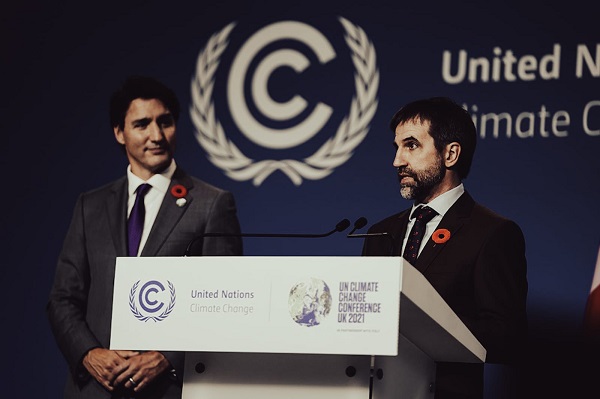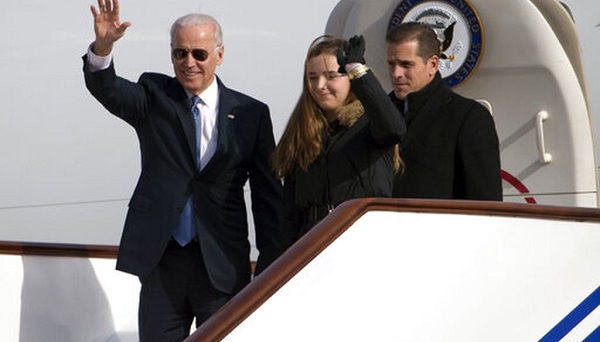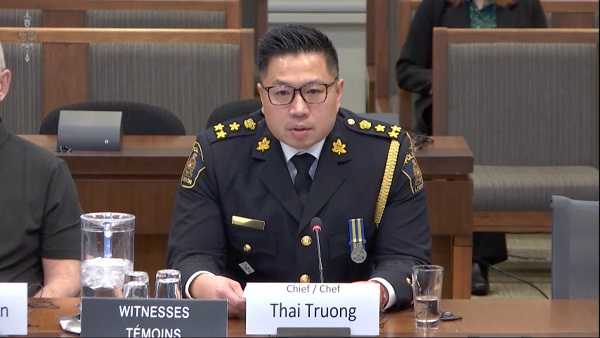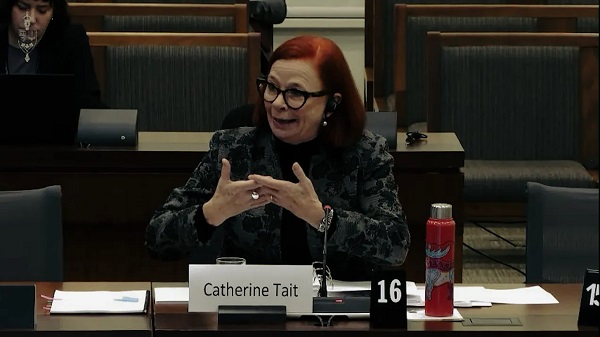Entertainment
Suzie Vinnick and Downchild Blues Band at Red Deer Memorial Centre Red Deer Wednesday

Downchild Blues Band a natural progression for Suzie Vinnick
By Rob Gilgan
For local folks that caught her in one of her house concerts of a few years back, Suzie Vinnick’s appearance with the Downchild Blues Band will be a refreshing memory. For the rest of us? A brand new treat. The Saskatoon native, who now calls the Niagara region home, is thrilled to be back on the road, in western Canada, and opening for this landmark band.

“I’ve known them for years,” Vinnick explains, and while she’s never shared a stage with them before, it feels like a natural progression for her. Originally, she was booked to open for the band in Ottawa and when the promoter learned she would be touring western Canada this fall, at the same time as Downchild, the decision was made to add her to the whole western tour. She’ll appear solo at the Memorial Centre in Red Deer on October 30, warming up the crowd for Donnie Walsh and the boys.
Vinnick is touring in support of her most recent album, Shake the Love Around, a 12 song set released in March of 2018 that’s left reviewers scrambling to find new words to express how well this artist showcases the diversity of the blues genre. The album’s title comes from the lyrics of All IWanna Do, a song she wrote with Steve Strongman, one of several collaborations on the disc.
Another, Drift Away, was written years ago, with Matt Andersen. “I would perfrom it at some of my shows and often, people would come up and comment on how it spoke to them,” she says, “It happened often enough, I reached out to Matt and asked if he’d be alright with me including it on Shake the Love Around and he gave his blessing.” Drift Away is one of those blues tunes that’s uplifting and validating. “When you’re going through a tough time, just breathe, you know,” Vinnick says, describing the song’s essence.
While Shake the Love Around dips into a variety of musical and lyrical styles, at its heart, it’s predominately a blues album, “There’s a bit of a blues angle to everything,” she adds. The single of the same name features a selection of Vinnick’s guitar heroes while showcasing her multi-instrumental prowess. The tour-de-force blues singer enjoys her time in the studio and the process of collaborating with other songwriters. “Sometimes it’s a better way to get a song completed,” she explains, “It depends, honestly, on what we come to the table with.”
She’s happy, not just with the album, but how it’s been welcomed across the country. She’s looking forward, after the fall touring, to share it with her many fans in Atlantic Canada. “I haven’t been to the east coast with it yet,” she says, knowing the album will be appreciated by the region’s seasoned blues enthusiasts. It’s not just fans that find Vinnick’s music and performance so noteworthy, as her career has been highlighted by many covet-worthy awards.
These include: 2018 Canadian Folk Music Award for Producer of the Year with her co-producer, Mark Lalama, finalist status in the Solo/Duo Category at the 2013 International Blues Challenge in Memphis, TN; the 2012 CBC Saturday Night Blues Great Canadian Blues Award and the 2012 Sirius XM Canada Blues Artist of the Year. Suzie has won 10 Maple Blues Awards (she has been nominated for 21 so far!), won the 2011 Canadian Folk Music Award for Contemporary Vocalist of the Year and is a 3X Juno Nominee.
Her most cherished sits in front of her, on her desk, reminding her of her prairie roots: the 2019 Saskatchewan Jazz Festival Special Recognition Award. This award takes her from winning an emerging contest at 19 and then follows her journey through the music business, including several appearances at the festival. “I was so thrilled and truly honoured with this award. It came with a two-hour show and I was able to bring on a bunch of players I’d worked with over the years,” she adds.
Thrilled and honoured also describes the invitation to open for Downchild Blues Band; she remembers, as a teen, seeing the Blues Brothers on Saturday Night Live and discovering the Toronto band she’ll be celebrating with here, on October 30.
Rob Gilgan
Censorship Industrial Complex
UNESCO’s New Mission: Train Influencers About Combatting Online “Misinformation”

The UN Educational, Scientific and Cultural Organization (UNESCO) is now incorporating teaching influencers how to “fact check” into its activities.
UNESCO claims that influencers have become “primary sources of news and cultural information” around the world – which prompted it to carry out a survey into how these online personalities verify the “news” they present.
Citizens in UN member-countries may or may not be happy that this is how their taxpayer money funding the world organization is being spent these days. But UNESCO is not only conducting surveys; it is also developing a training course for said influencers (which are also interchangeably referred to as content creators in press releases).
It’s meant to teach them not only to “report misinformation, disinformation and hate speech” but also to collaborate with legacy media and these outlets’ journalists, in order to “amplify fact-based information.”
The survey, “Behind the screens,” was done together with researchers from the US Bowling Green State University. 500 influencers from 45 countries took part, and the key findings, UNESCO said, are that 63 percent of them “lack rigorous and systematic fact-checking protocols” – but also, that 73% said they “want to be trained.”
This UN agency also frames the results as showing that respondents are “struggling” with disinformation and hate speech and are “calling for more training.”
UNESCO is justifying its effort to teach influencers to “rigorously” check facts by referring to its media and information literacy mandate. The report laments that mainstream media has become “only the third most common source (36.9%) for content creators, after their own experience and their own research and interviews.”
It would seem content creators/influencers are driven by common sense, but UNESCO wants them to forge closer ties with journalists (specifically those from legacy, i.e., traditional media – UNESCO appears very eager to stress that multiple times.)
Related: United Nations Development Program Urges Governments to Push Digital ID
Under the guise of concern, the agency also essentially warns creators/influencers that they should be better aware of regulations and “international standards” that pertain to digital media – in order to avoid “legal uncertainty” that exposes them to “prosecution and conviction in some countries.”
And now, UNESCO and US-based Knight Center for Journalism in the Americas have launched a one-month course which is currently involving 9,000 people from 160 countries. The goal is to train them to “address disinformation and hate speech and provide them with a solid grounding in global human rights standards.”
The initiative looks like an attempt to get “traditional” journalists to influence the influencers, and try to prop up their outlets, that are experiencing an erosion in trust among their audiences.
If you’re tired of censorship and surveillance, subscribe to Reclaim The Net.
Business
Canadians largely ignore them and their funding bleeds their competition dry: How the CBC Spends its Public Funding

If we want to intelligently assess the value CBC delivers to Canadians in exchange for their tax-funded investment, we’ll need to understand two things:
- How CBC spends the money we give them
- What impact their product has on Canadians
The answer to question #2 depends on which Canadians we’re discussing. Your average young family from suburban Toronto is probably only vaguely aware there is a CBC. But Canadian broadcasters? They know all about the corporation, but just wish it would lift its crushing hobnailed boots from their faces.
Stick around and I’ll explain.
For the purposes of this discussion I’m not interested in the possibility that there’s been reckless or negligent corruption or waste, so I won’t address the recent controversy over paying out millions of dollars in executive benefits. Instead, I want to know how the CBC is designed to operate. This will allow us to judge the corporation on its own terms.
The Audit is a reader-supported publication. To receive new posts and support my work, consider becoming a free or paid subscriber.
CBC’s Financial Structure
We’ll begin with the basics. According to the CBC’s 2023-24 projections in their most recent corporate plan strategy, the company will receive $1.17 billion from Parliament; $292 million from advertising; and $209 million from subscriber fees, financing, and other income. Company filings note that revenue from both advertising and legacy subscription pools are dropping. Advertising is trending downwards because of ongoing changes in industry ad models, and the decline in subscriptions can be blamed on competition from “cord-cutting” internet services. The Financing and other income category includes revenue from rent and lease-generating use of CBC’s many real estate assets.
The projected combined television, radio, and digital services spending is $1.68 billion. For important context, 2022-23 data from the 2022-2023 annual report break that down to $996 million for English services, and $816 million for French services. 2022-23 also saw $60 million in costs for transmission, distribution, and collection. Corporate management and finance costs came to around $33 million. Overall, the company reported a net loss of $125 million in 2022-23.
The corporation estimates that their English-language digital platforms attract 17.4 million unique visitors each month and that the average visitor engages with content for 28 minutes a month. In terms of market relevance, those are pretty good numbers. But, among Canadian internet users, cbc.ca still ranked only 43rd for total web destinations (which include sites like google.com and amazon.ca). French-language Radio-Canada’s numbers were 5.2 million unique visitors who each hung around for 50 minutes a month.
Monthly engagement with digital English-language news and regional services was 20 minutes. Although we’re given no visitor numbers, the report does admit that “interest in news was lower than expected.”
CBC content production
All that’s not very helpful for understanding what’s actually going on inside CBC. We need to get a feel for how the corporation divides its spending between programming categories and what’s driving the revenue.
The CRTC provides annual financial filings for all Canadian broadcasters, including the CBC. I could describe what’s happening by throwing columns and rows of dollar figures at you. In fact, should you be so disposed, you can view the spreadsheet here. But it turns out that my colorful graph will do a much better job:
As you can see for yourself, CBC spends a large chunk of its money producing news for all three video platforms (CBC and Radio-Canada conventional TV and the cable/VOD platforms they refer to as “discretionary TV”). The two conventional networks also invest significant funds in drama and comedy production.
The chart doesn’t cover CBC radio, so I’ll fill you in. English-language production costs $143 million (roughly the equivalent of the costs of English TV drama/comedy) while the bill for French-language radio production came in at $94 million (more or less equal to discretionary TV news production).
CBC Content Consumption
Who’s watching? The CBC itself reported that viewers of CBC English television represented only 5.1 percent of the total Canadian audience, and only 2.0 percent tuned in to CBC news. By “total Canadian audience”, I mean all Canadians viewing all available TV programming at a given time. So when the CBC tells us that their News Network got a 2.0 percent “share”, they don’t mean that they attracted 2.0 percent of all Canadians. Rather, they got 2.0 percent of whoever happened to be watching any TV network – which could easily come to just a half of one percent of all Canadians. After all, how many people still watch TV?
According to CRTC data, between the 2014–15 and 2022–23 seasons, English language CBC TV weekly viewing hours dropped from 35 million to 16 million. That total would amount to less than six minutes a day per anglophone Canadian. Specifically, news viewing fell by 52 percent, sports by 66 percent, and drama and comedy by 51 percent.
CBC Radio One and CBC Music only managed to attract 14.3 percent of the Canadian market. What does that actually mean? I’ve seen estimates suggesting that between 15 and 25 percent of all Canadians listen to radio during the popular daily commute slots. So at its peak, CBC radio’s share of that audience is possibly no higher than 3.5 percent of all Canadians.
A recent survey found that only 41 percent of Canadians agreed the CBC “is important and should continue doing what it’s doing.” The remaining 59 percent were split between thinking the CBC requires “a lot of changes” and was “no longer useful.” Those numbers remained largely consistent across all age groups.
It seems that while some Canadian’s might support the CBC in principle, for the most part, they’re not actually consuming a lot of content.
CBC Revenue sources
CBC’s primary income is from government funding through parliamentary allocations. Here’s what those look like:
Advertising (or, “time sales” as they refer to it) is another major revenue source. That channel brought in more than $200 million in 2023:
But here’s the thing: the broadcast industry in Canada is currently engaged in a bitter struggle for existence. Every single dollar from that shrinking pool of advertising revenue is desperately needed. And most broadcasters are – perhaps misguidedly – fighting for more government funding. So why should the CBC, with its billion dollar subsidies, be allowed to also compete for limited ad revenue?
Or, to put it differently, what vital and unique services does the CBC provide that might justify their special treatment?
It’s possible that CBC does target rural and underserved audiences missed by the commercial networks. But those are clearly not what’s consuming the vast majority of the corporation’s budget. Perhaps people are watching CBC’s “big tent” drama and comedy productions, but are those measurably better or more important than what’s coming from the private sector? And we’ve already seen how, for all intents and purposes, no one’s watching their TV news or listening to their radio broadcasts.
Perhaps there’s an argument to be made for maintaining or even increasing funding for CBC. But I haven’t yet seen anyone convincingly articulate it.
Subscribe to The Audit.
-

 David Clinton2 days ago
David Clinton2 days agoWhat Happens When Ministries Go Rogue?
-

 Automotive2 days ago
Automotive2 days agoNorthvolt bankruptcy ominous sign for politicians’ EV gamble
-

 Crime2 days ago
Crime2 days agoWhat did Canada Ever Do to Draw Trump Tariff on Immigration, You Ask? Plenty
-

 Daily Caller2 days ago
Daily Caller2 days agoCNN’s Scott Jennings Says History Will Remember Biden As ‘Complete And Total Disgrace’ Over Hunter Pardoning
-

 Addictions2 days ago
Addictions2 days agoLondon Police Chief warns parliament about “safer supply” diversion
-

 Automotive2 days ago
Automotive2 days agoElectric-vehicle sales show modest spark
-

 Health2 days ago
Health2 days agoFauci admitted to RFK Jr. that none of 72 mandatory vaccines for children has ever been safety tested
-

 Daily Caller2 days ago
Daily Caller2 days ago‘Dark Day’: Another Western Country Backs Doctor-Assisted Suicide, Opens Door To ‘Murder Of Old And Sick’












